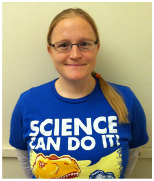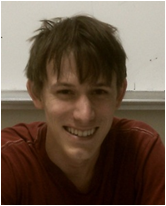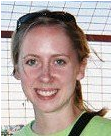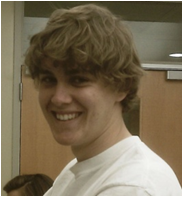About
Contacts:
For biology and microscopy issues, contact Tim O’Brien at etobrien@email.unc.edu.
For software issues, contact Joe Hsiao at phsiao@cs.unc.edu.
 Professor Richard Superfine, Director
Professor Richard Superfine, Director
Dept of Physics and Astronomy
Phone: 919-962-1185
rsuper@physics.unc.edu
 Professor Klaus Hahn, Co-Director
Professor Klaus Hahn, Co-Director
Department of Pharmacology
Phone: 919 843-2775
khahn@med.unc.edu
 Research Assistant Professor Timothy O’Brien
Research Assistant Professor Timothy O’Brien
Biology Specialist
Phone: 919-843-2798
etobrien@email.unc.edu
 Research Professor Michael Falvo
Research Professor Michael Falvo
Dept of Physics & Astronomy
Phone: 919-962-9346
falvo@physics.unc.edu
———————–
Come use our facilities!
———————–
Research Scientists:
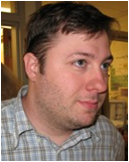 Jeremy Cribb
Jeremy Cribb
Phone: 919-962-4852
jcribb@email.unc.edu
Generally, my work focuses on particle microrheology techniques, where I measure the transport of microspheres or nanorods during either passive (thermal diffusion) or active (magnetically-driven) processes. These measurements inform us about the material properties of polymer systems at smaller, more physiologically-relevant length and time scales. My early work harnessed our 3dfm system as a viable instrument for active microrheology measurements on DNA, HA, and mucus. For the past few years, I have served as project lead on our novel high-throughput microscopy system, Panoptes.
 Joe Ping-Lin Hsiao
Joe Ping-Lin Hsiao
phone: 919-962-1895
phsiao@cs.unc.edu
My work includes developing and maintaing a visualization software package that renders 3D volumes and surfaces, developing new software features for our hight throughput microscope (Panoptes), and an image-database visualization software.
Graduate Students:
 Evan Nelsen
Evan Nelsen
Dept of Physics and Astronomy
Phone: 919-962-4889
efn@live.unc.edu
My research involves using an atomic force microscope to probe forces in cells while fluorescently imaging them with a versatile optics system. What’s cool about our system is that we can see cells from the side! I use my system in a variety of applications, including phagocytosis, membrane-actin dynamics, and cell adhesion.
Chad Hobson
Dept of Physics and Astronomy
Phone: 919-962-4852
hobsonc@live.unc.edu
Jake Brooks
Dept of Physics and Astronomy
Phone: 410-937-7894
brooksjt@live.unc.edu
I am developing micron-scale flexible elastomeric magnetically-actuated post arrays which I will use to study microfluidic transport, mixing, and particle capture.
Megan Kern
Dept of Physics and Astronomy
Phone: 919-962-4852
megkern@live.unc.edu
I study signaling protein activity and localization in response to mechanical forces using atomic force microscopy, vertical light sheet illumination and fluorescence resonance energy transfer (FRET).
Undergrads:
Autumn Sanson
Dept of Physics and Astronomy
autumns@email.unc.edu
I study mucus adhesion forces through novel magnetic and microscopy techniques and develop analysis methods.
Alumni:
Dept of Physics and Astronomy
Phone: 919-962-4889
beicker@physics.unc.edu
Robert Judith
Dept of Physics and Astronomy
My research focuses on microactuators, both manmade and biological. I work on the development of biomimetic cilia, magnetically actuatable microrods, to measure fluid properties. Specifically, I am interested in using the biomimetic cilia to diagnose clotting disorders in trauma patients. I am also interested in understanding how eukaryotic cilia function.
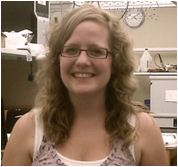 Suzy Lynch
Suzy Lynch
Dept of Biochemistry
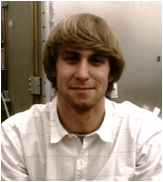 Luke Osborne
Luke Osborne
Dept of Physics and Astronomy
Ryan Schubert
I am doing research on video-based bead and poletip autofinding for the high throughput
microscope (Multiscope) project. I also do work on realtime video based 3d bead tracking
using image analysis focus measures.
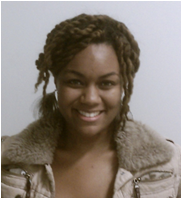 Nadira Williams
Nadira Williams
Dept of Physics and Astronomy
 Jerome Carpenter
Jerome Carpenter
Dept of Applied Science and Engineering
Phone: 919-962-8481
romec@unc.edu
I design and build bioreactors to mimic the forces that human bronchial epithelial cells (HBECs) experience in vivo. My designs explore the relationship between cyclical strain, shear-stress and mucociliary clearance.
 Kris Ford
Kris Ford
Dept of Biomedical Engineering
I study the use of paramagnetic nanoparticles for gene delivery and the application of magnetic fields to achieve transfection. I examine the effects of oscillating fields on the uptake of these nanoparticles and the intracellular pathways that are affected. I also study the forces involved in intracellular molecular motor transport. With the introduction of 1 micron paramagnetic microspheres into the cytosol, I exert forces on the microsphere with a 3-Dimensional Force Microscope (3DFM), probing the mechanics of the intracellular environment.
Brian Eastwood
I am developing image analysis techniques for analyzing motion in video microscopy. One of the challenges in video microscopy is analyzing how different layers of the specimen contribute to an image. The goal of my research is to form consistent models of layer composition and motion from image sequences. This research ties into the CISMM Video Motion Extraction project.
Current Position: Assistant Professor of Physics, High Point University
I am currently developing new materials for the fabrication of arrays of magnetically actuable biomimetic cilia. Biomimetic cilia are flexible microrods (750nm in diameter and 25 microns tall) that generate fluid flows similar to those generated by biological cilia.
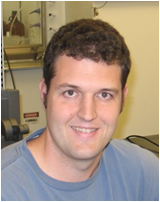 Nathan Hudson
Nathan Hudson
hudson@idi.harvard.edu
Current Position: Post Doc Fellow, Springer Laboratory, Department of Biological Chemistry and Molecular Pharmacology, Harvard Medical School; Program in Cellular and Molecular Medicine, Children’s Hospital Boston
At UNC, I worked on discovering the molecular basis for the mechanical properties of fibrin fibers, networks and sheets. Fibrin forms the structural backbone of blood clots. Individual fibrin fibers have remarkable mechanical properties including the ability to strain up to 330% without failing. The molecular basis of this extensibility is not yet fully understood. In addition, fibrin networks are known to strain stiffen, but the origins of this phenomenon is not known. We showed that the origin of these properties is best explained by a rubber-like elasticity stemming from an interconnected network of alpha-C regions within the fiber. Additionally, we showed that strain stiffening acts as a network strengthening mechanism by offloading strain unto other fibers under lower mechanical stress.
 Lamar Mair
Lamar Mair
lomair@email.unc.edu
Research description: I grow aspect-ratio defined magnetic micro- and nano-rods and wires using a technique known as templated electrodeposition. I study how their dimensions affect their ability to move through Matrigel, an extracellular matrix (ECM) mimic, under an applied magnetic field. Increasing the efficacy of transport through the ECM may enable researchers to better design the shapes of nanoparticles used in magnetic drug delivery.
Adam Shields
arshields@gmail.com
Current Position: NRC post-doctoral fellow, Center for Bio/Molecular Science & Engineering, Naval Research Lab
At UNC, I assisted in the development of a fabrication process for magnetically actuated nanorod arrays that act as biomimetic cilia. These structures are composed of a novel soft polymer- magnetic nanoparticle composite which is magnetic yet retains the polymer’s flexibility. By actuating the array with externally applied magnets we demonstrated that by mimicking the beat of embryonic nodal cilia we could simultaneously generate well-defined regions of fluid transport (above the cilia tips) and mixing (below). The primary objective of the project was to utilize these structures as a platform for elucidating the fluid dynamics generated in biological cilia systems. For example, the coexistence of these transport and mixing regimes could have implications for nodal cilia, which transiently exist in the embryos of all vertebrate species and generate fluid motion which is responsible for determining the left/right asymmetry of the vertebrate body plan.
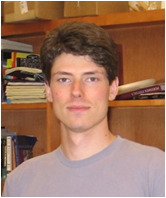 Ricky Spero
Ricky Spero
I study the mechanical properties of fibrin clots, a biopolymer that helps stem blood flow. These studies primarily involve measurements of microbeads under thermal diffusion and magnetically applied forces. I am also helping to develop high throughput systems for microbead measurements.
Vinay S Swaminathan
swaminathanv@mail.nih.gov
Current Position: Post Doc Fellow, Laboratory of Cell and Tissue Morphodynamics, NHLBI/NIH
At UNC and as a part of CISMM, my interest was in understanding the role of mechanical forces and external physical cues in cellular functions. I used the magnetic tweezers systems(3DFM) to investigate the role of cell stiffness on cancer cell invasion and study the underlying mechanism of “mechanical regulation” in a cancer cell. In a separate study, I used the 3DFM system to investigate the mechanism of activation of the small GTPase RhoA in response to mechanical forces.
The cancer study was done in collaboration with K Mythreye and Gerry Blobe at Duke University and the RhoA study was done under the lead of Christophe Guilluy and Keith Burridge at UNC- Chapel Hill.
Undergraduate Alumni
 Igal Bucay
Igal Bucay
Dept of Physics and Astronomy, Dept of Mathematics
Kyle Pridgen
Dept of Chemistry
 Lauren Scheetz
Lauren Scheetz
Dept of Biology
Adam Turner
Dept of Chemistry
asturner@email.unc.edu
Max Dejong
Phone: 919-962-4852
mdejong@live.unc.edu
Department of Pharmacology




